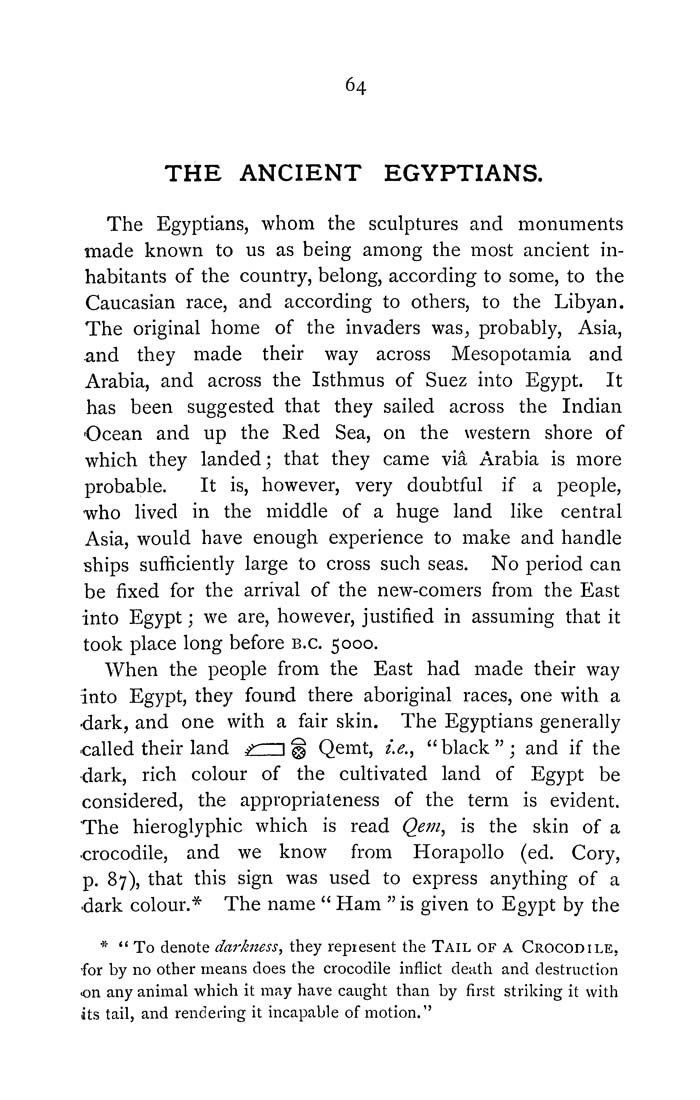64
THE ANCIENT EGYPTIANS.
The Egyptians, whom the sculptures and monuments
made known to us as being among the most ancient in¬
habitants of the country, belong, according to some, to the
Caucasian race, and according to others, to the Libyan.
The original home of the invaders was, probably, Asia,
and they made their way across Mesopotamia and
Arabia, and across the Isthmus of Suez into Egypt. It
has been suggested that they sailed across the Indian
Ocean and up the Red Sea, on the western shore of
which they landed; that they came via Arabia is more
probable. It is, however, very doubtful if a people,
who lived in the middle of a huge land like central
Asia, would have enough experience to make and handle
ships sufficiently large to cross such seas. No period can
be fixed for the arrival of the new-comers from the East
into Egypt; we are, however, justified in assuming that it
took place long before b.c 5000.
When the people from the East had made their way
into Egypt, they found there aboriginal races, one with a
dark, and one with a fair skin. The Egyptians generally
called their land s^ I q Qemt, i.e., "black"; and if the
•dark, rich colour of the cultivated land of Egypt be
considered, the appropriateness of the term is evident.
The hieroglyphic which is read Qem, is the skin of a
•crocodile, and we know from Horapollo (ed. Cory,
p. 87), that this sign was used to express anything of a
dark colour."^ The name " Ham " is given to Egypt by the
* *' To denote darkness, they represent the Tail of a Crocodile.
for by no other means does the crocodile inflict death and destruction
on any animal which it may have caught than by first striking it with
its tail, and rendering it incapable of motion."
|








